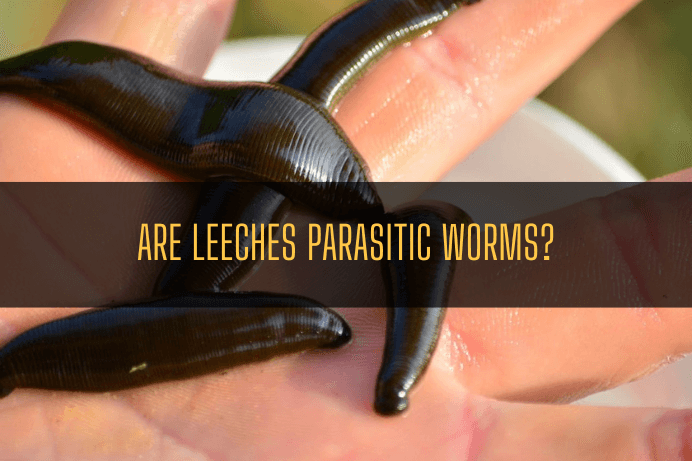Are Leeches Parasitic Worms?
Annelids, also known as segmented worms, include anatomically and behaviorally more specialized leeches than earthworms.
How to Identify?
Leeches, which belong to the Subclass Hirudinea, are segmented worms that act as ectoparasites. They are placed under the Clitellata classification, along with earthworms (Subclass Oligochaeta), because they possess a clitellum.
The clitellum is a swollen area around the head of the leech where the reproductive organs are located. Unlike oligochaetes, leeches do not constantly display the presence of a clitellum. It only becomes visible during the breeding season.
Structure
Leeches have a bilateral symmetry and possess sturdy, muscular bodies. They are flattened in a front-to-back direction, but their segments are usually not visible. Leeches come in different forms; some are long and resemble worms, while others are wider with a pear-shaped appearance. Their shape can undergo significant changes, both in terms of elongation and contraction, as well as starvation and satiety.
The body narrows towards the head and possesses a small oral sucker that encloses the mouth and a larger caudal sucker at the posterior end. The only exception to this rule is the marine fish parasites known as Pisciolidae, which have a larger oral sucker. The anus is located on the dorsal surface (top) just before the caudal sucker.
Internal structure
Euhirudinea, also known as ‘true’ leeches, possess 32 internal segments when mature. Acanthobdellida, a smaller group of fish leeches, on the other hand, has 29 segments. However, counting these segments can be challenging due to including four to six segments in the front sucker and seven segments in the rear sucker. Furthermore, the remaining segments are ringed to create two to five apparent segments per internal septum.
Unlike other annelids, leeches lack parapodia (‘feet’) and chaetae (bristles), with the exception of Acanthobdellida.
Oral structure
Typically, leeches possess three jaws and make a Y-shaped incision. However, the Australian land leech deviates from this norm by having two jaws and a V-shaped incision.
Habitat
Most leeches primarily inhabit freshwater environments; however, various species can be found on land or in marine habitats.
On land, leeches are commonly found on the ground or in low vegetation within wet rainforests. In drier forests, they can be found in moist areas on the ground. While they cannot swim and usually avoid water, they can survive short periods of immersion.
During dry weather, certain leech species burrow into the soil, where they can survive for many months, even in environments completely devoid of water. In these conditions, their bodies become contracted, dry, and rigid, with their suckers indistinguishable and their skin completely dry. However, when sprinkled with a few drops of water, these leeches become fully active and emerge within ten minutes.
Freshwater leeches generally prefer still or slowly flowing waters, but there have been instances of collecting specimens from fast-flowing streams.
Some leech species are considered amphibious as they have been observed in terrestrial and aquatic habitats.
Diet of Leeches
Leeches are categorized based on their feeding methods:
- One group is the jawed leeches or Gnathobdellida, which have jaws equipped with teeth that allow them to bite the host. To prevent blood clotting, these leeches produce a non-enzymatic secretion called hirudin. The land leech commonly encountered by bushwalkers belongs to this group.
- Another group is called the jawless leeches or Rhyncobdellida, which inserts a needle-like protrusion called a beak into the host’s body. They secrete an enzyme called hematin, which dissolves already-formed clots. Leeches living off the body fluids of worms and small freshwater snails possess this type of apparatus.
- The third group is known as the worm leeches or Pharyngobdellida, lacking jaws or teeth. Instead, they swallow their prey whole. Their food mainly consists of small invertebrates.
Foraging
The behavior of a hungry leech involves being highly responsive to light and mechanical stimuli. It frequently changes its position and explores its surroundings by moving its head and waving its body. It also adopts an alert posture by extending its body to its full length and remaining still. This behavior is believed to optimize the functioning of the sensory structures in its skin.
When a leech senses the presence of a potential host approaching, it initiates a crawling movement known as ‘inchworm crawling’. It continues this movement trial-and-error until its anterior sucker contacts the host and attaches to it. Aquatic leeches are more likely to exhibit this active pursuit behavior, whereas common land leeches often accidentally attach themselves to a host.

